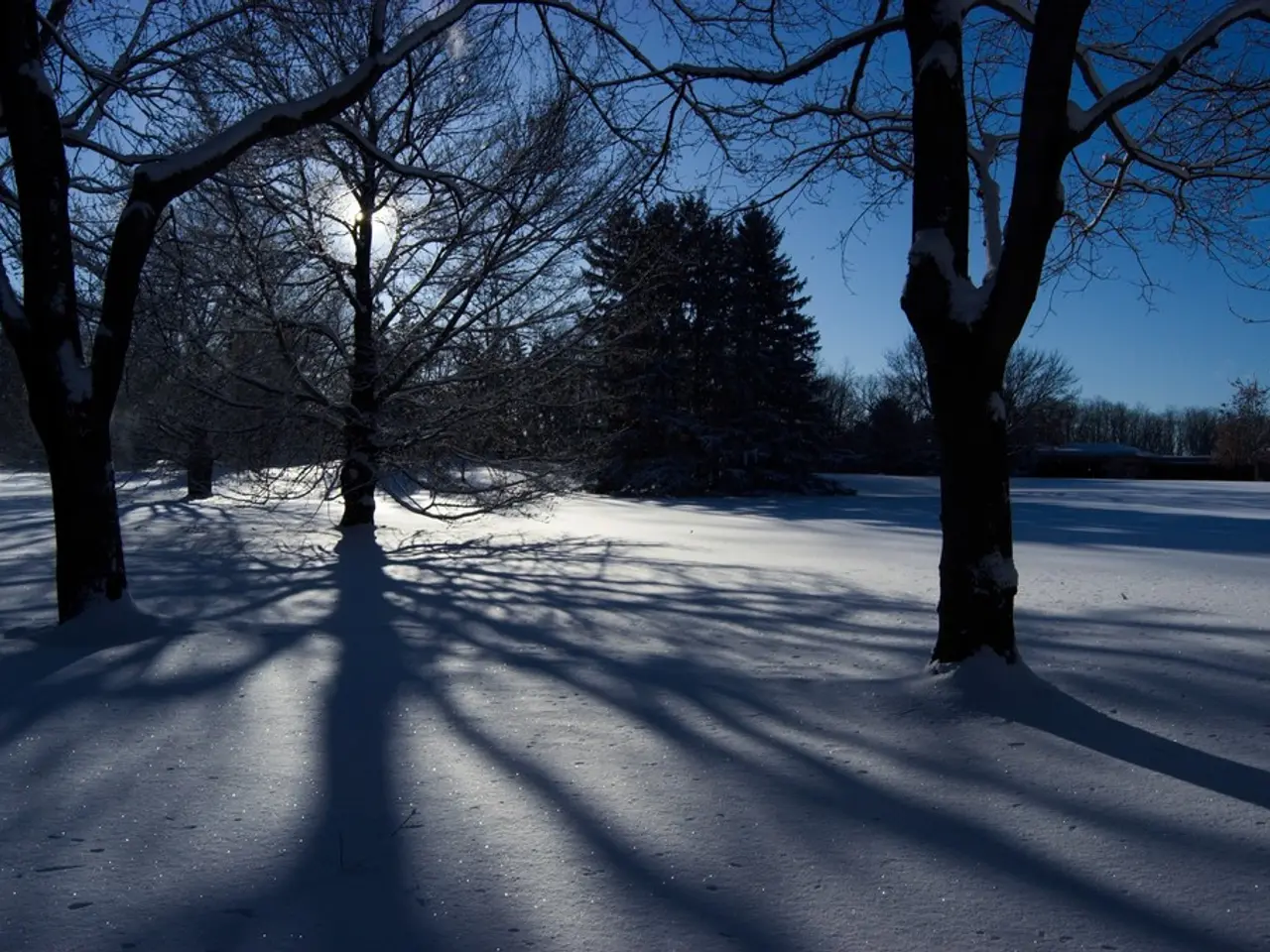Wrapping Plants in Burlap to Shield Them from Winter Chill
Burlap, a coarse, woven fabric made from natural fibers, has proven to be an effective and cost-effective solution for gardeners looking to protect their crops from frost. This breathable material provides a layer of protection that shields plants from cold air while allowing oxygen and moisture to pass through.
By blocking cold air and wind, burlap reduces the direct impact of frost and wind on plant surfaces, helping to prevent frost damage. The fabric serves as an insulating wrap that traps some warmth from the soil and plants, moderating temperature fluctuations during cold nights. This insulation helps protect delicate plants during frosty weather.
Burlap's porous nature maintains airflow, preventing excessive moisture buildup that could lead to fungal problems, unlike plastic covers which can trap moisture. Gardeners often use burlap to protect perennials, young trees, and frost-sensitive vegetables by wrapping or covering them before a frost event. Using thicker burlap fabrics, such as 9 to 10 oz, can enhance the consistency of protection, keeping soil cooler yet moist while preserving airflow.
Burlap covers also provide effective sun protection, shielding plants from excessive sunlight and preventing sun-related damage. They help retain moisture around plant roots, ensuring adequate hydration during dry periods. This makes burlap covers a valuable tool for gardeners, especially during the winter months.
However, it's important to maintain the burlap covers during frosty weather to ensure they continue to provide effective protection for your plants. Monitor moisture levels around plants covered with burlap to prevent excessive wetness that can promote fungal growth and damage plants. Also, check for damage on burlap covers before frosty weather arrives to prevent cold air from seeping through and reaching plants.
Gradually remove the burlap covers as the weather starts to warm up and the risk of frost diminishes. Burlap covers are lightweight and flexible, making them easy to handle and install over plants of various sizes and shapes.
Frost can cause cellular damage to plant tissues, leading to symptoms such as wilting, browning of leaves, and death of plant tissues. Frost can have long-lasting consequences including delaying planting schedules, reducing crop yields, and affecting food security and economic stability in agricultural regions.
In conclusion, burlap is a versatile and cost-effective solution for gardeners looking to protect their plants from frost. Its breathable nature, insulating properties, and sun protection make it an invaluable tool for maintaining healthy plants during cold spells.
By using burlap to cover their plants, home-and-garden enthusiasts can protect their plants from frost damage, ensuring a healthy lifestyle for the growth of their crops. During wet frosty weather, it's essential to monitor the moisture levels around the plants covered with burlap to prevent excessive wetness that could promote fungal problems and damage the plants.




